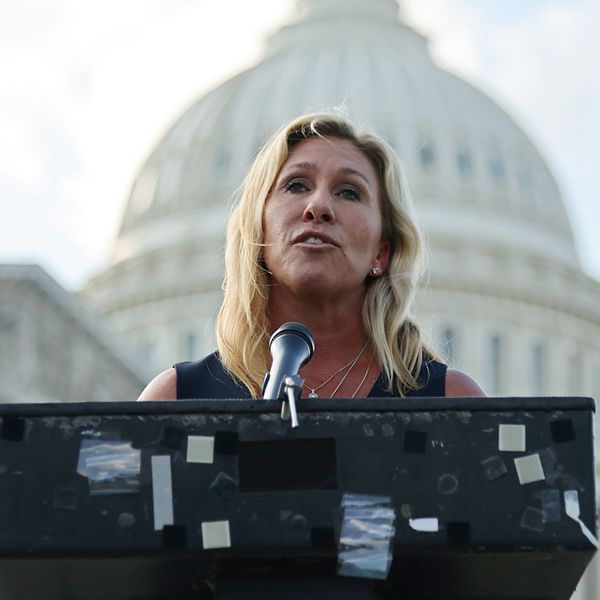In its annual report to Congress, the U.S.-China Economic and Security Review Commission offered a grim picture of the U.S.-China relationship and urged Congress to do more to directly confront a rising Chinese threat.
The commission, or USCC, ostensibly charged with analyzing the national security implications of the U.S.-China economic and trade relationship, argued that the Chinese Communist Party “is a long-term, consequential, menacing adversary determined to end the economic and political freedoms that have served as the foundation of security and prosperity for billions of people.”
But while the USCC’s bottomline conclusions and recommendations described China as an existential danger, many of the details and assumptions undergirding the report and not highlighted in its published summary point towards a more complicated U.S.-China dynamic which is not destined for imminent conflict.
In its analysis of the cross-Strait military balance, the USCC report called on Congress to “take urgent measures to strengthen the credibility of U.S. military deterrence in the near term,” including prioritizing the delivery of weapons to Taiwan and deploying more cruise and ballistic missiles to the Indo-Pacific. Its recommendation was based on an argument that “[t]oday, the PLA either has or is close to achieving an initial capability to invade Taiwan — one that remains under development but that China’s leaders may employ at high risk — while deterring, delaying, or defeating U.S. military intervention.”
The full 551-page report indicates, however, that there are widely differing assessments on PLA invasion capabilities and the timeline for PLA readiness, as the PLA still faces critical obstacles in its modernization efforts.
Similarly, the report’s executive summary sounded the alarm regarding China’s growing economic ties to countries in Latin America and the Caribbean, arguing that “China is laying the groundwork for deepening influence and presence in a region of particular strategic significance for the United States.” It recommended that the United States upgrade its investments in the region to compete with Chinese economic engagement.
But the full report once again qualified its conclusions on the matter, noting that the United States has “important advantages that China cannot replicate” in the Western Hemisphere and that “[m]any Latin American and Caribbean governments and publics...are seeking to guard against risks from their relationship with China.”
On economic linkages between the United States and China, the USCC noted that the blurred line between state-owned and nonstate Chinese firms increased the risks of U.S. investment in Chinese markets. It extrapolated that “U.S. capital and expertise may unwittingly contribute to improvements in China’s military capabilities or support a Chinese startup whose underdeveloped technology today may be used to abuse human rights tomorrow.” The report then offered recommendations that Congress prohibit U.S. investment in specific Chinese business entities and empower the president to prohibit critical supply chain relationships with China.
The contrast between the USCC’s alarmist conclusions and its more nuanced analysis which is not highlighted in its executive summaries is part of a broader trend of U.S. commentary inflating the China threat and hyping the possibility of the United States falling behind, even while the United States retains advantages in important metrics.
For example, the 2020 Department of Defense report on PLA capabilities prominently noted in its executive summary that the PLA Navy outnumbers the U.S. Navy in ship count. But it didn’t qualify that the PLA Navy’s numbers advantage comes from its bigger fleet of coastal patrol vessels that have a limited ability to operate beyond China’s near seas or that the U.S. Navy is more than twice as large as the PLA Navy in the key metric of tonnage.
The U.S.-China Commission consistently produces hawkish reports on China. Previous reports have advocated for greater security cooperation between the United States and Taiwan — including public displays of U.S. military commitments to Taiwan — closer scrutiny over universities and academic researchers to protect U.S. technological prowess, and “Manhattan Project”-like efforts to maintain U.S. superiority vis-a-vis China in key technological and economic areas.
Its 2021 report to Congress continued this trend, and further depicted Chinese leadership as “paranoid,” “fearful of subversion and failure,” and “increasingly uninterested in compromise and willing to engage in destabilizing and aggressive actions in its efforts to insulate itself from perceived threats.” The USCC concluded with the fatalistic assertion that the United States must take purposeful action lest it face the “slow but certain erosion of the security, sovereignty, and identity of democratic nations.”














